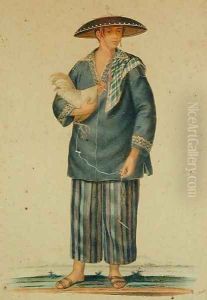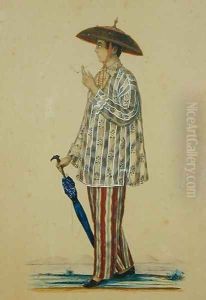Carl Johann Karuth Paintings
Carl Johann Karuth was a German painter and graphic artist known for his landscapes, portraits, and still life paintings. Born on December 14, 1867, in Görlitz, Germany, Karuth showed an early interest in art, which led him to pursue formal education in the field. He studied at the Royal Academy of Arts in Berlin, where he was influenced by the works of the German Romantic painters as well as the early Impressionists. Karuth's style evolved over the years, from a more traditional approach to incorporating elements of Impressionism, especially in his treatment of light and color.
Throughout his career, Karuth traveled extensively across Europe, drawing inspiration from the diverse landscapes and cultures he encountered. These travels were reflected in his works, which often depicted scenes from the German countryside, the Alps, and occasionally, urban settings. His landscapes are particularly noted for their atmospheric quality and the sense of tranquility they evoke.
Beyond landscapes, Karuth was also accomplished in portraiture and still life. His portraits are characterized by a keen observation of detail and a profound sense of empathy towards his subjects. In his still lifes, Karuth demonstrated a meticulous attention to the texture and form of objects, imbuing them with a vibrant, almost lifelike presence.
Despite his talents, Carl Johann Karuth remained relatively obscure in the broader European art scene of his time. This was partly due to his preference for living and working in smaller communities rather than in major art capitals. He was, however, well-respected within German artistic circles and participated in several exhibitions throughout his career.
Karuth's later years were marked by a return to more traditional themes and techniques, possibly as a response to the turbulent changes in the art world and the wider geopolitical upheavals of the early 20th century. He continued to paint until his death on August 3, 1945, in his hometown of Görlitz, leaving behind a body of work that, while not widely known outside of Germany, is appreciated for its technical skill and quiet beauty. His legacy is preserved through collections in regional German museums and in the hands of private collectors.

